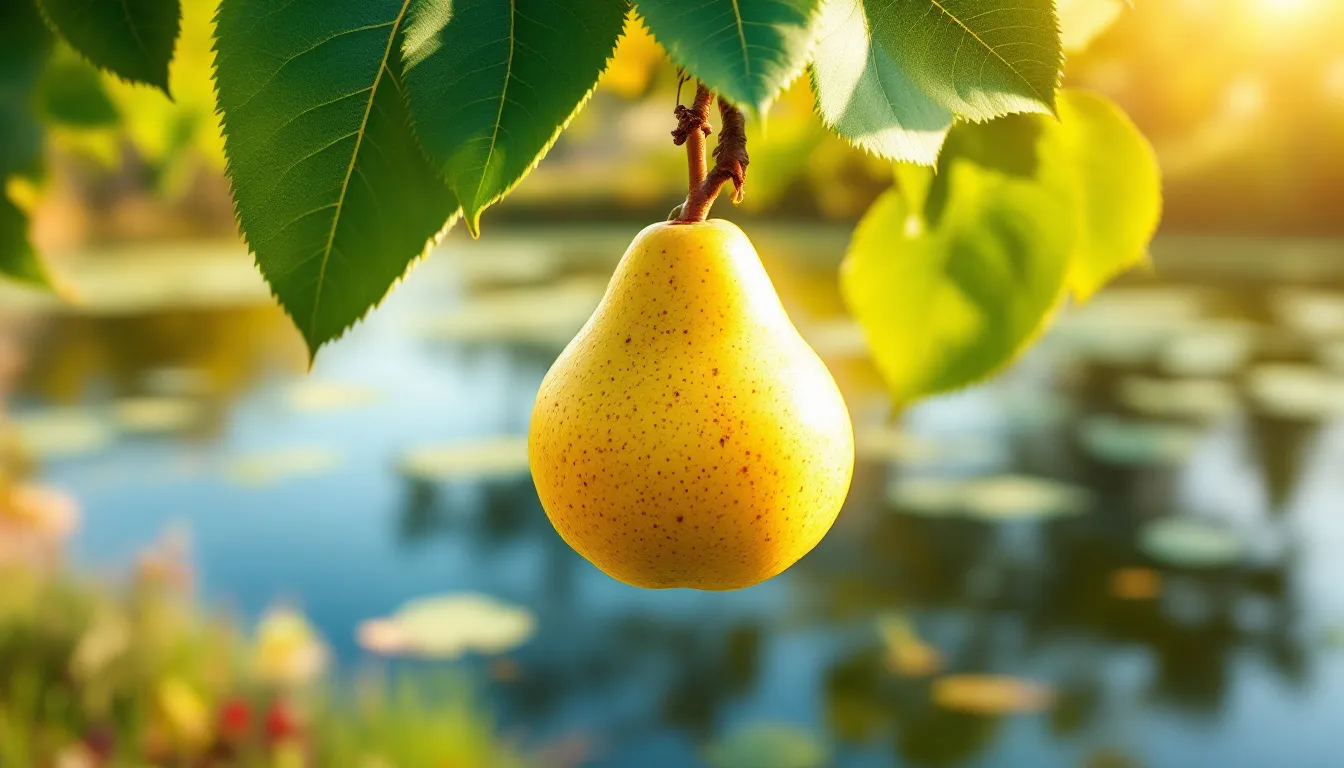
Growing the Best Conference Pear: Care, Tips, and Harvest Guide
Share
Essential Guide to Growing and Caring for Conference Pear Trees

Introduction to Pyrus Communis
Pyrus communis, also known as the Conference pear, is a popular variety of pear tree grown commercially in the UK and other parts of Europe.
The Conference pear was developed by Thomas Francis Rivers and first introduced at the National British Pear Conference in London in 1885, where it won first prize. This conference held in England in 1885 was significant in enhancing pear harvest growth and promoting the variety.
Conference pears are known for their sweet and juicy flavour, making them a favourite among fruit enthusiasts. They have a distinctive appearance with an elongated neck, contributing to their unique and somewhat odd look.
They are self-fertile, but having a pollinator can increase the quantity of fruit produced.
Conference pear are hardy and resistant to many diseases, making them a great choice for gardeners.
Choosing the Right Tree from RHS Plants
-
When selecting a Conference pear, look for a tree with a sturdy trunk and a well-developed root system.
-
Consider the size of the tree, as Conference pears can grow to be quite large, and choose a semi-dwarf or dwarf variety if space is limited.
-
Check the tree’s certification from RHS Plants to ensure it is a genuine Conference pear.
-
Choose a tree that is grafted onto a suitable rootstock, such as quince rootstocks, for optimal growth and production.
-
Consider the tree’s suitability for your garden’s climate and soil type.
Planting Conference Pears
Plant Conference pear in the autumn or spring, when the weather is cool and there is ample moisture in the soil. Begin planting when the soil is workable and temperatures are moderate to ensure optimal growth.
Choose a location with full sun and well-draining soil, as Conference pears are susceptible to root rot in wet conditions. Freshly planted woods should be staked for their first year to ensure stability, especially for dwarf varieties.
Dig a hole that is twice as wide and just as deep as the tree’s root ball, and add organic matter such as compost or manure to improve soil fertility. Plant the tree at the same depth as it was in the pot, and water well to settle the soil.
Mulch around the base of the tree to retain moisture and suppress weeds.
Caring for Your Fruit Tree
-
Water Conference pear trees regularly, especially during their first year of growth, to ensure they establish a strong root system. Nutrients play a crucial role in tree growth, as they help in forming symbiotic relationships with mycorrhizal fungi, which can enhance soil health and tree development.
-
Feed the tree with a balanced fertilizer in the spring, following the manufacturer’s instructions.
-
Thin out the fruit in the summer to reduce the burden on branches and promote the development of larger and healthier pears.
-
Prune the tree annually to maintain its shape and promote fruiting.
-
Keep the area around the tree free of weeds and debris to prevent disease and pests.
Pest and Disease Management
-
Conference pear trees are susceptible to diseases such as fire blight and powdery mildew, so monitor the tree regularly for signs of infection.
-
Use organic or chemical controls as needed to prevent the spread of disease.
-
Keep an eye out for pests such as aphids, codling moths, and pear psylla, and use controls such as insecticidal soap or neem oil to manage infestations.
-
Practice good garden hygiene, such as disposing of infected leaves and fruit, to prevent the spread of disease.
-
Consider using resistant varieties or rootstocks to reduce the risk of disease.
Pruning and Training
Prune Conference pear trees annually to maintain their shape and promote fruiting.
Remove any dead, diseased, or damaged branches, and thin out the center of the tree to allow sunlight to reach the fruit. Pruning is crucial for the development of large fruit, as it helps the tree allocate resources more effectively.
Train the tree to a central leader or open center system, depending on the desired shape and size. Prune the tree in the winter or early spring, at the beginning of the dormant season, to minimize the risk of disease and pests.
Use sharp, clean tools to make precise cuts and prevent damage to the tree.
Supporting the Tree
-
Conference pear trees may require support, especially when they are young or carrying a heavy crop of fruit.
-
Use stakes or trellises to support the tree, taking care not to damage the trunk or branches.
-
Remove supports as the tree grows and becomes more self-supporting.
-
Consider using a fruit tree support system, such as a pear tree trellis, to keep the tree upright and promote fruiting.
-
Monitor the tree’s growth and adjust the support as needed to prevent damage.
Harvesting and Storage
Conference pears are typically ready to harvest in October, when they are fully ripe and have a sweet, buttery flavor. Their firm texture makes them ideal for canning, as they retain their flavor and texture when processed.
Check the pears regularly for ripeness, as they ripen beginning in September and reach full ripeness by early November. Pears that are picked before full ripeness can be stored and consumed later, while fully ripe pears should be enjoyed quickly before they spoil.
Handle the pears gently to avoid bruising, and store them in a cool, dry place to keep them fresh.
Conference pears can be stored for several months, making them a great choice for winter fruit.
Consider using a fruit storage system, such as a cold frame or fruit cellar, to keep the pears fresh for longer.
Planning an Orchard with Pear Conference Trees
When planning an orchard with Conference pear trees, consider the tree’s spacing and growth habits. The historical significance and popularity of Conference pear cultivation make it one of the most cultivated varieties in Central and Western Europe.
Plant the trees 15-20 feet apart, depending on the variety and rootstock. Choose a location with full sun and well-draining soil, and consider the tree’s suitability for your climate and soil type. Consider planting multiple trees to ensure cross-pollination and increase fruit production. Plan for the long-term care and maintenance of the trees, including pruning, fertilization, and pest management. Tracking seasonal changes is crucial for effective orchard management, as it helps optimize growth and harvest.
Common Challenges and Solutions
Growing trees can be a rewarding endeavor, but it comes with its own set of challenges. Here are some common issues you might face and practical solutions to ensure your trees thrive.
Conclusion and Final Tips
-
Growing Conference pear trees can be a rewarding and delicious experience, with the right care and attention.
-
Remember to plant the tree in a location with full sun and well-draining soil, and water and fertilize it regularly.
-
Prune the tree annually to maintain its shape and promote fruiting, and monitor it regularly for signs of disease and pests.
-
Consider using resistant varieties or rootstocks to reduce the risk of disease, and plan for the long-term care and maintenance of the tree.
-
With proper care and attention, Conference pear trees can thrive and produce delicious fruit for years to come.
